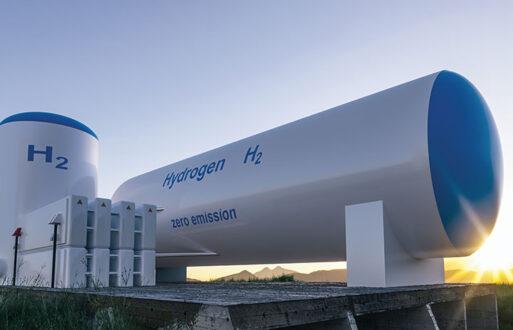Disclaimer: This blog post, which answers “What is the ERCOT model-ready date, and why does it matter for new resources?,” was generated using PCI’s ISO/RTO Documentation AI Chatbot, powered by ChatGPT. While the content is based on curated market documentation, it is intended for informational purposes only and may not reflect the most up-to-date or comprehensive information. We recommend verifying any key details directly with relevant sources before making business decisions.
For the latest answer to this question, generated live, visit our free ISO/RTO Documentation Chatbot.
When it comes to integrating new resources into ERCOT’s grid, the model-ready date plays a pivotal role in ensuring a smooth and timely interconnection process. Whether you’re developing a new generator, energy storage resource, or behind-the-meter (BTM) project, understanding ERCOT’s interconnection requirements is critical to navigating project timelines, regulatory obligations, and market participation rules.
In this blog post, we’ll explore what the model-ready date represents, why it’s essential for new resources, and how ERCOT’s interconnection process differs for BTM and grid-connected projects. By the end, you’ll have a clear understanding of how these factors impact project development, permitting, and revenue opportunities.
ISO/RTO Documentation Chatbot
Use our AI to search Business Practice Manuals from ISO/RTO markets at no cost.
What is ERCOT’s model-ready date, and why does it matter?
The model-ready date is a key milestone in ERCOT’s interconnection process. It represents the point at which a new resource’s technical and operational data is fully integrated into ERCOT’s Network Operations Model. This model is essential for grid planning, operations, and market settlements, as it ensures ERCOT has accurate information about the resource’s capabilities and location.
For new generators and energy storage resources, the model-ready date is critical because it directly affects project timelines. Before a resource can synchronize with the grid or participate in ERCOT’s market, it must meet all interconnection requirements, including achieving its model-ready status. This involves submitting complete technical data, undergoing testing, and resolving any operational concerns identified by ERCOT or the Transmission Service Provider (TSP).
Missing the model-ready date can delay a project’s ability to connect to the grid, impacting revenue opportunities and potentially increasing costs. For market participants, this milestone ensures that their resource is accurately represented in ERCOT’s systems, enabling proper market participation and settlement.
How ERCOT’s interconnection process differs for BTM vs. grid-connected projects
ERCOT’s interconnection process varies significantly depending on whether a project is behind-the-meter (BTM) or grid-connected. These differences influence everything from regulatory obligations to market participation rules, shaping the development and revenue potential of each type of project.
Interconnection requirements
Grid-connected projects: These resources must follow ERCOT’s formal interconnection process, which includes submitting technical data, securing an interconnection agreement, and meeting the requirements for synchronization and commissioning. Grid-connected projects are subject to ERCOT’s planning and operational standards, ensuring they can reliably contribute to the grid.
BTM projects: Behind-the-meter resources, such as rooftop solar or on-site energy storage, are typically connected to a customer’s internal electrical system rather than directly to the grid. While they don’t require ERCOT’s interconnection approval, they must comply with local utility interconnection standards and permitting requirements.
Regulatory obligations
Grid-connected projects: These resources are subject to ERCOT’s market rules, including compliance with protocols for telemetry, metering, and market settlements. They must also adhere to state and federal regulations governing grid interconnections.
BTM projects: Regulatory obligations for BTM resources are generally less stringent. However, if a BTM resource exports power to the grid, it may need to register with ERCOT and comply with additional requirements, such as metering and reporting.
Market participation rules
Grid-connected projects: These resources can participate directly in ERCOT’s energy and ancillary services markets, providing opportunities for revenue generation through energy sales and grid support services.
BTM projects: While BTM resources primarily serve on-site energy needs, they can participate in ERCOT’s market under certain conditions, such as enrolling in demand response programs or exporting excess power. However, their market participation is often more limited compared to grid-connected resources.
How these differences impact project development and revenue opportunities
The distinctions between BTM and grid-connected projects have significant implications for project development, permitting, and revenue potential.
For grid-connected projects, the interconnection process is more complex and time-intensive, requiring coordination with ERCOT, TSPs, and other stakeholders. However, these projects benefit from broader market access and the ability to generate revenue through energy sales and ancillary services.
BTM projects, on the other hand, offer a simpler development process with fewer regulatory hurdles. They’re ideal for customers looking to reduce energy costs or enhance resilience. While their market participation is more limited, BTM resources can still create revenue opportunities through demand response programs or by exporting excess power under favorable conditions.
Why understanding ERCOT’s interconnection process is key
Navigating ERCOT’s interconnection process is essential for ensuring the success of new energy projects. The model-ready date serves as a critical milestone, enabling resources to connect to the grid and participate in the market. Meanwhile, understanding the differences between BTM and grid-connected projects helps developers and market participants make informed decisions about project design, permitting, and revenue strategies.
Whether you’re planning a large-scale generator or a behind-the-meter solution, knowing the ins and outs of ERCOT’s requirements can make all the difference in achieving your project goals.
For the latest answer to this question, generated live, visit our free ISO/RTO Documentation Chatbot.







